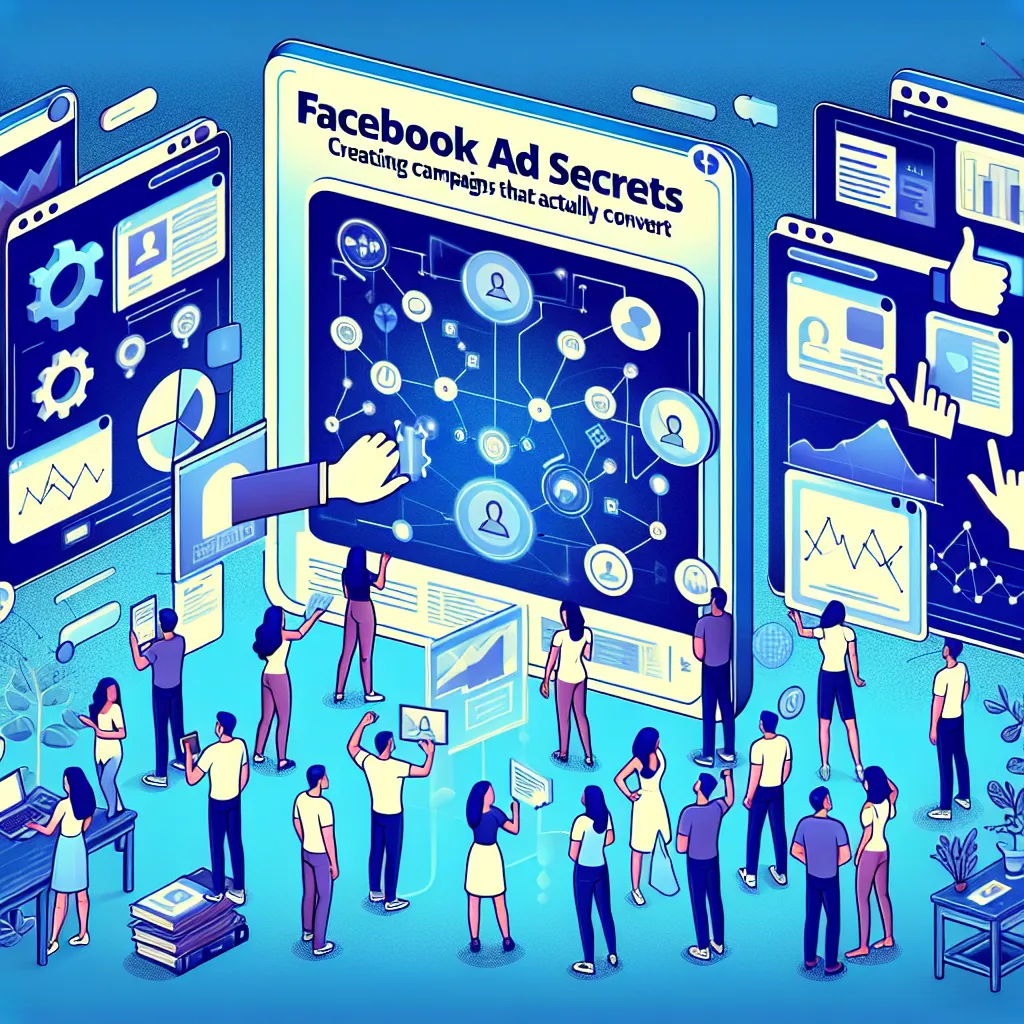
Facebook Advertising Secrets Creating Campaigns That Actually Convert
Welcome to the ultimate guide on mastering Facebook advertising — a powerful tool for small business owners and marketing professionals in the service industry. Whether you're running a home service company, a training organization, or managing marketing campaigns, leveraging Facebook ads can significantly boost your growth. In this post, we'll uncover actionable secrets to create Facebook ad campaigns that not only reach but convert your target audience. Let's dive into the world of social media marketing and unlock the potential of paid social campaigns.
Understanding the Basics of Facebook Advertising
Welcome to the world of Facebook advertising, where possibilities are as vast as your Aunt Linda’s collection of cat memes. But fear not! Whether you're a small business owner or a seasoned marketing professional, understanding the basics can turn Facebook's ad platform from an enigma into your best buddy.
Why Facebook Advertising?
Huge Audience: With over 2.8 billion monthly active users, Facebook offers an unparalleled platform for reaching potential customers worldwide.
Advanced Targeting: From demographic targeting on Facebook to interest targeting on Facebook, you can zero in on your ideal audience with laser precision.
Versatile Ad Formats: Whether it’s video ads on Facebook or carousel ads on Facebook, you have a plethora of formats to choose from to engage your audience creatively.
For more insights on optimizing your engagement, explore our comprehensive resources at NEXUSPRO Articles.
The Building Blocks: Setting Up Your Campaign
Create a Business Page: The foundation of any successful campaign starts with setting up a professional presence through a Facebook business page. This acts as your hub for interacting with customers and showcasing your brand.
Dive Into Audience Insights: Use audience targeting on Facebook to define who sees your ads. Understand their preferences, behavior patterns, and demographics to tailor your message effectively.
Your Campaign Objective: Are you driving traffic, generating leads, or boosting posts on Facebook? Clearly define what success looks like for each campaign.
The Almighty Budget: Determine your Facebook ad budget wisely. Remember, effective advertising is not about how much you spend but how strategically you allocate those dollars.
"Businesses make an average of in revenue for every
Understanding the Basics of Facebook Advertising
Before diving into strategies, it's essential to grasp the fundamentals. We'll explore how Facebook ads work, and familiarize you with key components like Facebook ad manager and your Facebook business page setup. Understanding these basics will lay a strong foundation for your campaign success.
they spend on Google Ads." While this stat is specific to Google Ads, similar ROI can be achieved with optimized strategies in platforms like Facebook.
This setup isn’t just about clicking buttons; it’s about setting goals that align with broader marketing objectives and ensuring that every dollar spent can be traced back to tangible results. To refine these strategies further, check out our article on omni-channel messaging at Omni-channel messaging - every message in one place.
The Pixel Puzzle: Why It Matters
If 'Facebook Pixel' sounds like something out of a sci-fi movie, you're not alone! This powerful tool enables conversion tracking with Facebook ads by collecting data to help optimize campaigns and build targeted audiences for future ads. It’s like having a digital detective working behind the scenes ensuring every ad spends wisely.
A Quick Pixel Setup Guide:
Add code snippet: Install the pixel code provided by the Facebook ad manager onto your website's pages where conversions occur.
Create Custom Audiences: Use this data to retargeting ads on Facebook or create lookalike audiences that mimic your ideal customer profile.
Anaylze Data: Monitor conversions and tweak campaigns based on real-time data feedback for optimal performance.
The beauty of mastering these basics? You’ll be well-equipped to create campaigns that not only reach potential clients but convert them too — turning curiosity into clicks and clicks into customers. For more tips and tricks check out our collection of articles dedicated to enhancing digital marketing efforts at NEXUSPRO Articles.
"Remember: Success in online advertising isn’t just about getting seen — it’s about being remembered."
Setting Goals: What Do You Want to Achieve?
Before diving into the nitty-gritty of Facebook advertising, let's hit pause and ask ourselves a crucial question: "What do I want to achieve with my Facebook ads?" Setting clear goals is the compass that guides your campaigns through the digital wilderness, ensuring you don't get lost in the vast ocean of online advertising.
Why Setting Goals Matters
Think of goal setting as your magic wand. It defines your campaign's purpose and helps you measure success. Without it, you're basically running around with a blindfold on—fun at parties, not so much in digital marketing. Here are some reasons why setting goals is non-negotiable:
Direction: Goals provide direction for your ad strategy. Whether it's boosting brand awareness or driving e-commerce sales, having a destination in mind helps you craft more focused and effective campaigns.
Measurement: With clear objectives, measuring ROI becomes a piece of cake. You'll know exactly what metrics to track and can quickly determine if your campaign is performing as planned.
Optimization: Understanding your targets allows for better optimization. If an ad isn't hitting its mark, knowing your goals enables you to tweak elements like audience targeting on Facebook or ad creative without losing sight of the big picture.
Common Facebook Ad Campaign Goals
Your goal setting should be as sharp as a tack. Here are common objectives marketers often focus on:
Brand Awareness: Ideal for small businesses looking to increase recognition in their industry.
Lead Generation: Perfect for capturing potential clients' information, crucial if you're in the service industry looking to expand your customer base.
E-commerce Sales: Aimed at driving traffic and conversions on your website; especially relevant for those using social media marketing as their main sales channel.
User Engagement: Focused on increasing interaction through likes, shares, and comments—crucial for maintaining an active community around your brand.
A successful campaign isn't just about throwing spaghetti at the wall and seeing what sticks. It's about strategic planning and execution based on well-defined goals. As we explore more advanced strategies like A/B testing for Facebook ads or implementing retargeting ads on Facebook in this series, remember that everything circles back to this foundational step: set those goals!
"Setting goals is the first step in turning the invisible into visible." - Tony Robbins
If you're struggling with where to start or how to align these objectives with broader business goals, check out some insights from our experts at NEXUSPRO on maximizing efficiency with marketing automation tools by visiting our comprehensive guide on automation benefits for small businesses.
Audience Targeting: Reaching the Right People
When it comes to Facebook advertising, one of the most critical components for success is knowing your audience. Picture this: you’ve created a stunning ad with eye-catching visuals and a compelling call-to-action, but if it’s not reaching the right people, it’s like throwing a fabulous party and forgetting to send out the invites. So, how do you ensure your ads meet their perfect match? Let’s explore some savvy strategies for audience targeting on Facebook.
Understanding Your Ideal Customer
The first step in effective audience targeting is understanding who your ideal customer is. This starts with developing buyer personas that detail their demographics, interests, behaviors, and challenges. For instance:
Demographics: Age, gender, location, language.
Interests: Hobbies, favorite brands, influencers they follow.
Behaviors: Online shopping habits, device usage.
This foundational knowledge can significantly enhance your ability to craft campaigns that resonate with the right people.
The Power of Facebook's Ad Manager Tools
Facebook Ad Manager offers an arsenal of tools to pinpoint your audience with laser precision. From demographic targeting on Facebook to interest targeting on Facebook, these options allow you to narrow down your audience effectively. Here are some standout features:
Custom Audiences: Reach people who already have a relationship with your business using data from sources like customer lists or website traffic through Facebook Pixel setup.
Lookalike Audiences: Expand your outreach by targeting new people similar to your existing customers.
Behavioral Targeting: Tap into behaviors such as purchase history or travel intentions for more focused campaigns.
A/B Testing: Experiment and Optimize
No two audiences are exactly alike, which means testing is key. Through A/B testing for Facebook ads, you can experiment with different audience segments and ad creatives. This trial-and-error approach helps identify what works best for conversion optimization and refining future campaigns without blowing up your budget faster than a cat video goes viral!
"Audience targeting isn’t about reaching the most people; it's about reaching the right people." — Anonymous Marketing Guru
The ultimate goal of any marketing campaign is not just exposure but capturing attention—and converting that into action. By using these strategic tips, small business owners in the service industry can maximize their investment in social media marketing and ensure their messages reach those who will benefit most from their services.
Crafting Compelling Ad Creatives
In the fast-paced world of Facebook advertising, crafting ad creatives that not only capture attention but also drive conversions is both an art and a science. The right creative can make your audience stop their endless scrolling and say, "Wait, what was that?" before they click through to learn more.
1. Understand Your Audience
Your ad creative should speak directly to your target audience's needs and interests. Use audience insights from the Facebook Ads Manager to inform your creative decisions. Whether you’re targeting millennials interested in eco-friendly products or business professionals searching for SaaS solutions, your visual and text elements should resonate with them.
Demographic Targeting: Tailor your visual style and language to fit the age group, gender, location, and even the job titles of your audience.
Interest Targeting: Tap into specific interests like technology, fitness, or cooking to make your ad relatable.
2. Choose the Right Format
The format of your ad plays a crucial role in how it’s perceived. Facebook offers a variety of formats such as video ads, image ads, carousel ads, and more. Each serves a different purpose and can be used strategically depending on your campaign goals.
Video Ads: With the average user spending over 19 hours a month watching video content on Facebook (source: Statista), leveraging videos can significantly boost engagement.
Carousel Ads: Perfect for showcasing multiple products or highlighting different features of a service in one ad.
3. Nail Your Messaging
Your ad copy should be concise yet persuasive enough to compel action. Remember, you’re competing with memes and cat videos here! Use strong calls-to-action (CTAs) that leave no room for doubt about what you want users to do next—be it clicking through to your website or signing up for a newsletter.
"Great ad copy doesn't just sell; it tells a story that's impossible to ignore." – Unknown Marketing Guru
A/B Testing: Because Testing Is Believing!
You wouldn't buy shoes without trying them on first—ad creatives are no different. A/B testing allows you to pit different versions against each other to see which performs best. Test variations in images, headlines, CTAs, and even colors for optimal results.
A/B Testing Tools: Utilize Facebook's built-in A/B testing features or third-party tools like AdEspresso for deeper insights into performance metrics like click-through rates (CTR) and conversion rates.
An Example: If one version of an ad with bright colors leads to higher engagement than another with muted tones, you have actionable data guiding future campaigns.
Crafting compelling ad creatives might seem daunting at first glance but remember—it’s all about connecting with your audience on a personal level while being strategic about design choices. For more insights on optimizing your marketing efforts across channels, check out our related articles on marketing automation strategies.
Optimizing Your Ad Budget and Bidding Strategy
Let's face it, even the most creative Facebook advertising campaigns can fall flat if your budget and bidding strategy resemble a poorly planned garage sale. But fear not, mastering these elements doesn't require a PhD in economics. With the right tactics, you can make every dollar dance like it's on TikTok.
Understanding Budget Types: Daily vs Lifetime
First things first—decide whether a daily or lifetime budget is right for your campaign. A daily budget allows Facebook to spend up to a set amount each day, giving you consistency and control over daily expenses. Conversely, a lifetime budget lets Facebook decide how to distribute your total spend over the campaign's duration.
Daily Budget Example: If you're running an engagement campaign for 30 days with a daily budget of , you’ll spend approximately 0 over the month.
Lifetime Budget Example: Set a lifetime budget of 0 for that same campaign duration and let Facebook optimize your spend across more active days.
The choice between these two depends largely on your campaign objectives. For instance, if you expect varying levels of audience interaction throughout the week, a lifetime budget offers flexibility.
Bidding Strategies That Win Clicks and Hearts
The bidding strategy you select is akin to setting the thermostat—get it wrong and you'll either freeze or burn through cash. Opting for the right bid type can improve your click-through rate without emptying your wallet.
Auction Bidding: Allows Facebook's algorithm to find the lowest possible cost per result while maximizing conversions. Ideal for those who like letting AI do some heavy lifting.
Manual Bidding: Offers control over how much you're willing to pay per action but requires more oversight.
Cost Cap Bidding: Sets a maximum cost per desired action so you can limit overspend while still allowing flexibility during high-opportunity moments.
A/B testing is crucial here. Experiment with various bidding strategies on different ad sets to see which garners the best results. Remember, even Thomas Edison had more than one lightbulb moment!
"By failing to prepare, you are preparing to fail." - Benjamin Franklin
Sneaky Tips for Stretching Your Budget Further
Tweak Audience Targeting: Tighten demographic targeting on Facebook or focus on interest groups that are more likely to engage with your offer.
Focus on Content Quality: High-quality content often results in lower costs-per-click due to better engagement rates.
Consider Marketing Automation Tools: Streamline processes such as lead nurturing or retargeting ads without stretching your wallet or sanity.
The goal is not just about lowering costs but enhancing every aspect of your campaign's performance. By fine-tuning these elements, you'll see higher returns—and perhaps finally afford that office coffee machine everyone's been dreaming about!
If you're looking for more insights into effectively managing marketing efforts as a small business owner, check out other insightful pieces from our NEXUSPRO Articles.
A/B Testing: Discover What Works Best
When it comes to Facebook advertising, A/B testing is like the GPS for your campaigns—it guides you through the maze of potential strategies and helps you find the most effective route. But, unlike a traditional GPS, it doesn't bark abrupt instructions at you (unless you count that one time it advised using Comic Sans... but we won't talk about that). Let's dive into how A/B testing can skyrocket your campaign performance.
What is A/B Testing?
A/B testing, also known as split testing, involves running two variations of an ad to see which performs better. It's the marketing equivalent of letting two birds fight it out over a piece of bread—except more humane and with less potential for feathers flying.
Ad Creative: Test different images or videos.
Ad Copy: Experiment with various headlines or calls-to-action.
Audience Targeting: Compare demographic targeting on Facebook versus interest targeting.
Ad Placement: Analyze results from different platforms like Instagram and Facebook feeds.
The Importance of A/B Testing in Facebook Ads
An insightful report by AdEspresso revealed that businesses using A/B tests saw up to a 37% improvement in conversion rates. That's some serious ROI! By continuously refining ads based on real-world data, small business owners can ensure they are not just throwing their ad budget into the void.
Steps to Conduct A/B Testing
Select a Variable to Test: Start with one change per test—be it ad creative or target audience—to isolate what's making an impact.
Create Two Versions: Develop two variants of your ad with only one differing element (you don’t want too many cooks spoiling the broth).
Launch Your Campaigns Simultaneously: Ensure both versions are run under similar conditions for accurate comparison.
Measure Performance: Utilize the Facebook Ad Manager’s insights to track metrics such as click-through rate and cost per impression.
Anaylze Results and Optimize: Identify which version performed better and integrate those learnings into future campaigns.
"The key is not to prioritize what's on your schedule but to schedule your priorities." – Stephen R. Covey
This quote rings especially true in digital marketing. By prioritizing A/B testing within your Facebook marketing strategy, you're ensuring every decision is guided by data-driven insights, maximizing your return on investment. Curious to learn more about effective strategies? Check out our comprehensive guide on marketing automation software for Australia.
A/B testing isn't just a tool; it's a way to systematically uncover what truly resonates with your audience. So go ahead, try different approaches, and let those insights lead your campaigns towards success!
Tracking Success with Conversion Tracking Tools
```html
Tracking Success with Conversion Tracking Tools
In the realm of Facebook advertising, simply launching a campaign and crossing your fingers is akin to throwing a dart blindfolded. To truly harness the power of your ads, you need to understand what works and what doesn't—and that's where conversion tracking tools come in. Let’s break down how you can use these tools to boost your digital marketing game.
The Magic Behind Conversion Tracking
Conversion tracking is like having a secret agent on your side—a digital Sherlock Holmes that follows your customer’s journey from ad interaction to final purchase. By implementing conversion tracking, you can pinpoint which ads are driving results, optimize underperforming campaigns, and justify every dollar spent. According to Facebook's resources, campaigns with conversion tracking see a 20% increase in return on investment (ROI).
Facebook Pixel: This tiny piece of code is your best friend in tracking conversions. Once installed on your website, it helps capture valuable data about user interactions, enabling retargeting and optimizing future ads.
Custom Conversions: Set up specific events that matter most to your business—like purchases or sign-ups—and track these using Facebook Pixel for more targeted insights.
Conversion API: For businesses handling sensitive data or those with server-side interactions, this API provides an alternative way to track conversions while maintaining data privacy.
Setting Up Your Conversion Tracking Like a Pro
The setup process might sound daunting but think of it like setting up IKEA furniture—complex at first glance but satisfying once complete (and with fewer missing screws). Here's how you can set it up seamlessly:
Create a Facebook Pixel in the Facebook Ads Manager.
Add the pixel base code to every page of your website. Don’t worry—Facebook provides detailed instructions tailored for various platforms.
Add event codes for specific actions you want to track, such as lead form submissions or checkouts.
If you're selling directly from Facebook or Instagram shops, ensure you're using the Conversion API for server-side tracking.
If you’re still feeling like you've bitten off more than you can chew, don’t hesitate to check out resources like this comprehensive guide on marketing automation for small businesses.
"Measurement is the first step that leads to control and eventually to improvement." - H. James Harrington
The Benefits of Effective Conversion Tracking
Tangible ROI: When you know which ads convert, you can allocate budget efficiently and maximize ROI.
A/B Testing Insights: Understand what creative elements resonate with audiences and make informed decisions based on real-time data.
User Behavior Insights: Gain insights into customer paths and pain points beyond the click-through rate (CTR).
So there you have it—conversion tracking tools are not just an option; they are essential weapons in your Facebook ads arsenal. By mastering them, you're not just riding the wave of social media marketing; you're shaping its course!
Advanced Techniques: Retargeting and Cross-Channel Promotion
In the ever-evolving landscape of Facebook advertising, it’s crucial to stay ahead of the game, especially when it comes to mastering advanced techniques like retargeting and cross-channel promotion. These strategies not only enhance your ad campaigns but also ensure they convert like hotcakes on a cold winter morning.
Retargeting: Keeping Your Brand Top-of-Mind
If you’ve ever window-shopped online, then received an ad for those exact sneakers you were eyeing, you've experienced the magic of retargeting. This approach is all about gently nudging potential customers who have already interacted with your brand. Think of it as a polite reminder rather than an aggressive salesman at your front door.
The Power of Pixel: By setting up the Facebook pixel, businesses can track visitors and re-engage them through personalized ads. This is where conversion tracking with Facebook ads becomes crucial.
Custom Audiences: Create custom audiences in Facebook advertising based on previous interactions—be it website visits, app engagements, or even email opens.
A/B Testing: Experiment with different messages or creatives to determine what resonates best with your retargeted audience. As they say, variety is the spice of life!
Cross-Channel Promotion: Integrating Your Marketing Efforts
Navigating across multiple platforms might seem daunting, but integrating your marketing efforts can lead to increased brand awareness and engagement. Establishing a cohesive strategy ensures that no stone—or social media platform—is left unturned.
"Brands utilizing cross-channel promotion strategies achieve 30% higher ROI compared to those sticking to single-platform campaigns." — HubSpot
Cohesive Content Calendars: Plan your content around specific advertisement goals using tools like NEXUSPRO's marketing automation software for seamless integration across channels.
Diverse Ad Formats: Leverage video ads on Facebook while simultaneously boosting posts on Instagram for maximum reach and engagement.
Synchronized Messaging: Keep messaging consistent across all platforms. This doesn't mean copying and pasting but rather ensuring that the core message aligns across each channel.
A well-executed cross-channel strategy can be a game-changer. By harmonizing your efforts across platforms, you're not only enhancing visibility but also reinforcing brand identity in the eyes (and screens) of your audience. If you're curious about more innovative ways to harness such strategies, check out our collection of insights on marketing automation in our extensive list of NEXUSPRO Articles.
Need help managing all these channels? Dive into omni-channel messaging solutions where every message is consolidated in one place through our comprehensive guide at NEXUSPRO Articles.
The Power of Content Calendar Planning Around FB Advertisement Goals
In the world of Facebook advertising, having a robust content calendar is like having a GPS for your marketing journey—it helps you map out your route and keeps you from getting lost in the social media wilderness. But how exactly does one harness this power to elevate their Facebook ad campaigns? Let's dive in.
Why You Need a Content Calendar for Facebook Ads
Imagine trying to plan a holiday dinner without a menu. Chaos, right? The same goes for running successful Facebook ad campaigns without a content calendar. Here’s why it's essential:
Organization: A content calendar ensures that all your posts, ads, and promotions are organized and timely, avoiding last-minute scrambles.
Consistency: It helps maintain a consistent voice and frequency in your ads, crucial for brand recall among users scrolling through their feeds.
Alignment with Goals: By planning ahead, you can align each piece of content with specific objectives, whether it’s lead generation or boosting engagement.
Bigger Picture View: It allows you to see how your Facebook advertising fits into your broader marketing strategy.
Tactical Tips to Optimize Your Content Calendar
Peppering some strategic spices into your content calendar can make all the difference. Here’s how:
Themed Days: Assign specific themes to certain days—like 'Testimonial Tuesday' or 'Fun Fact Friday'—to keep content fresh and engaging.
Seasonal Promotions: Plan campaigns around holidays or industry-specific events to capitalize on timely opportunities.
A/B Testing: Schedule different variations of ads to test what resonates best with your audience (and remember, even if one flops, it’s all part of the learning curve!).
Marketing Automation Integration: Utilize marketing automation tools to schedule posts and analyze performance insights efficiently.
A Real-Life Example: Succeeding with Structure
A small home service company found its marketing groove by integrating a well-thought-out content calendar with their Facebook advertising efforts. By planning posts around key services offered during peak seasons—like HVAC maintenance at the start of summer—they saw an increase in inquiries by over 30% during those months. This structured approach turned what used to be sporadic posting into a strategic powerhouse that drove consistent engagement year-round.
"Failing to plan is planning to fail." — Alan Lakein
Your Facebook ad strategy should be more than just throwing darts in the dark; it should be about hitting targets precisely with every post. By investing time in a solid content calendar, you're not just scheduling posts—you're scripting success stories. After all, who doesn’t love a happy ending?
In conclusion, mastering the art of creating high-converting campaigns through strategic planning in online advertising can give small business owners a competitive edge in digital marketing. With these secrets revealed about optimizing each aspect—from targeting right audiences using dynamic product ads; enhancing ad creatives; managing budgets effectively; implementing cutting-edge techniques—you are equipped now more than ever before! Embark confidently upon this journey towards achieving unparalleled results via strategic implementation tailored precisely around unique needs inherent within specific industries served by NexusPro SAAS Marketing Agency today itself!

Innovation
Fresh, creative solutions.

Integrity
Honesty and transparency.

Excellence
Quality services.

FOLLOW US
PRODUCT TOUR
SUPPORT
Copyright 2025. NEXUSPRO. All Rights Reserved.
We’re on a mission to build a better future where technology creates good jobs for everyone.

